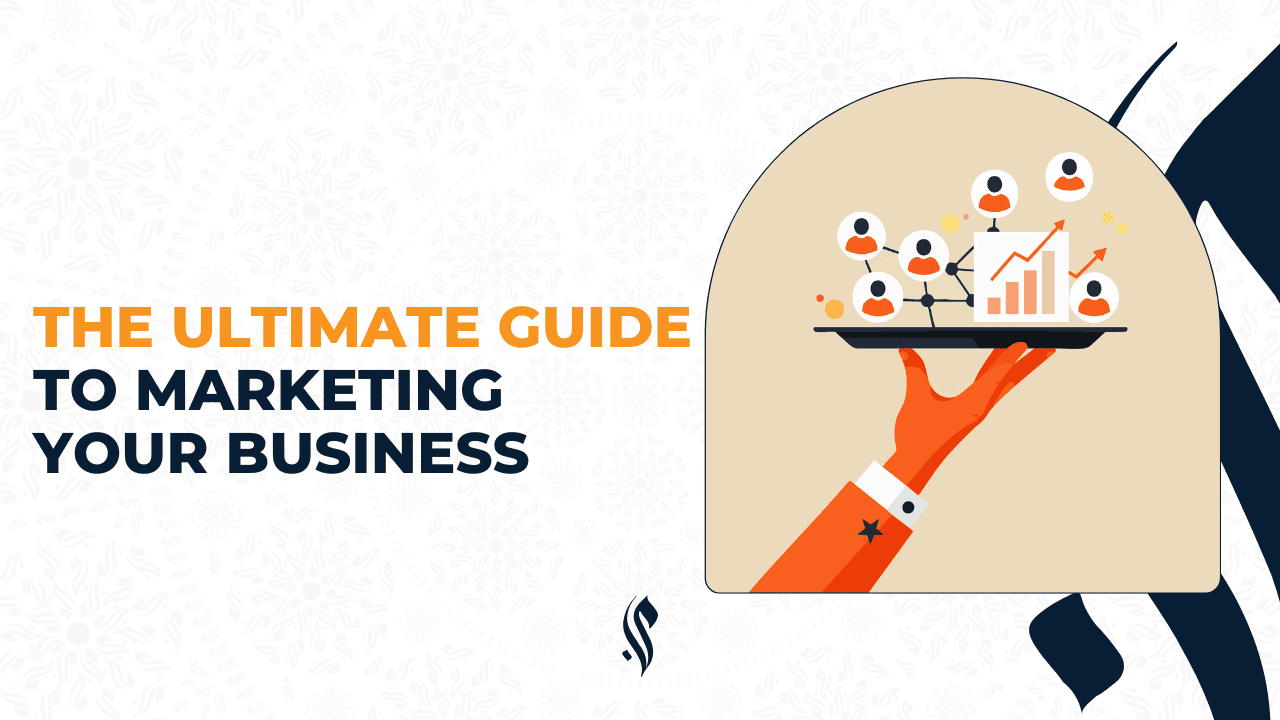

The Four Pillars of Modern Marketing: The Master Framework
Before we dive deep, hold this framework as your mental map. Everything in marketing fits into these four pillars:
- Strategy: Who you serve, and why you exist.
- Messaging & Positioning: What you say and how you are understood.
- Distribution: Where you show up and how often.
- Conversion & Retention: How you turn interest into revenue and keep customers coming back.
Consider these pillars as chapters in your planning cycle: strategy sets the boundaries, messaging sets the promises, channels carry the message, and conversion/retention turn it into sustainable value.
Pillar 1. Strategy: Your Marketing North Star
Start by writing one sentence that describes what success looks like for marketing. Is it monthly leads? Sustained revenue? Higher lifetime value? That sentence becomes the decision filter for every post, ad, and experiment.
Key elements of a strategic brief
Business objective > measurable, time-bound.
Target customer > the single person you will speak to.
Primary offer > the product or service that moves the numbers.
One key metric that proves marketing is working.
A small handcrafted soap brand may set the following 6-month goal: “Reach €5,000 monthly revenue at anLTV to CAC of ≥3:1 by selling subscription boxes to Eco-friendly customers.” This sentence crystallizes the offer, pricing, channel tests, and retention work to be done.
Strategy reduces wasted activity. Without it, marketing becomes busywork.
Pillar 2. Messaging & Positioning: Why They Choose You
People buy clarity, not cleverness. Your messaging must answer instantly:
Who is this for?
What problem does it solve?
What happens next?
A simple messaging formula
Headline: who + outcome.
1–2 sentences establishing credibility.
CTA: a clear next step.
Positioning is always relative. You don’t need to be everything to everyone, you need to own one truth.
Instead of “fashion for all,” a designer who sells modest clothing to college students can position as “durable, stylish modest pieces for young professionals.”
Test messages with real people. The sentence that gets a reaction is the one you keep.
Pillar 3. Distribution: Select a Few Channels and Master Them
Pillar 3. Distribution: Select a Few Channels and Master Them
There are many channels: search, social, email, marketplaces, partnerships, paid ads. Depth beats breadth.
Select channels with three filters
Where your customer already spends time.
Where you can create content consistently.
Where the economics (effort or ad spend) are sustainable.
Start with 1–2 channels. Run 3–6-week experiments. Measure using the metric from your strategic brief. If a channel produces reliable conversions at an acceptable cost, scale it.
A freelance UX designer tests LinkedIn outreach plus a short email nurture sequence.
A product maker tests Instagram Reels plus a small Google Search campaign for high-intent buyers.
Pillar 4. Conversion & Retention: Turning Interest Into Lifetime Value
Pillar 4. Conversion & Retention: Turning Interest Into Lifetime Value
Acquiring a customer is the first step. Retaining them is where long-term profit lives.
Aim for an LTV:CAC ratio of about 3:1, meaning each customer brings three times the value it costs to acquire them.
Retention is disproportionately powerful. Increasing customer retention by just 5% can increase profits by 25% to 95%.
Practical conversion tactics
Clear offer plus simple checkout.
One-step micro-commitments such as newsletter, samples, low-ticket offers.
After-purchase care: onboarding, follow-up, feedback loops.
Simple loyalty or subscription offers to grow LTV.
The content system: how content drives every pillar
The content system: how content drives every pillar
ontent kills two birds: it builds trust and it fuels channels. The high-level rule: use content to solve real problems.
Three content roles:
Acquisition content: attracts attention (how-to guides, social short form).
Conversion content: reduces friction (product demos, case studies).
Retention content: deepens relationship (exclusive tips, tutorials).
Content marketing works at scale. Content often costs less than traditional outbound tactics while generating more leads: content marketing can generate over three times as many leads as outbound marketing while costing about 62% less.
Email remains one of the highest-return channels. Many companies report double- or triple-digit ROI for well-executed email programs; industry benchmarks often show returns measured in tens of euros for every euro spent, making email essential for conversion and retention.
Subscribe to Muslim Founder's Newsletter
The only newsletter you need to start & grow your Muslim business, Insha'Allah.
100% Free. No Spam Guaranteed.
Measurement: “measure what matters”
Pick the vital few metrics that align with your strategic brief, examples:
Acquisition: cost per lead, conversion rate.
Commercial: conversion rate, average order value, LTV.
Operational: churn, repeat purchase rate.
Avoid vanity metrics. High follower counts or impressions matter only if they affect your key metric. Set a weekly review rhythm and treat experiments like controlled tests (one variable at a time).
Halal Marketing: what to avoid and what to practice
This section is central. Marketing has moral consequences; as Muslim founders we must protect trust and avoid practices that harm people or misrepresent products.
A. Practices Muslims must avoid
Deception marketing: using false claims, doctored reviews, or misleading before/after examples to create sales. Deception erodes trust and is forbidden.
False scarcity and urgency: fabricated “only 2 left” claims or countdowns used to force decisions when no real constraint exists.
Hidden fees and unclear terms: anything that causes the customer to misunderstand the price or obligations.
Manipulative psychological hacks: designing offers to prey on anxiety, shame, or confusion rather than providing honest value.
B. Halal advertising principles (what to practice)
Honesty and clarity: present the product truthfully and state real terms.
Transparent pricing: list the full price, fees, and renewal terms plainly.
Evidence-based claims: back performance claims with data you can show, or remove them.
Respect for the customer: ensure marketing preserves dignity and avoids manipulation.
Alignment with trust: prioritize long-term reputation over short-term profits.
These are practical, not merely aspirational. Build them into product pages, ad copy, and post-purchase flows.
Conclusion
Marketing becomes powerful when strategy, clarity, and consistency work together. The strongest results appear when you allocate your energy with intention. Half of your effort should strengthen the essentials such as your product, your pricing, and your checkout or website experience. Another portion should focus on the single channel that consistently brings results, while the final portion stays open for experiments and retention systems that raise lifetime value. For new founders, clarity of the offer should come before any paid ads.
Many founders struggle because they chase every trend, test too many ideas at once, or track so many metrics that nothing becomes clear. Real growth comes from doing the opposite. Choose two channels. Commit for ninety days. Measure the same few numbers every week. Improve based on what the data actually shows.
Avoid unrealistic promises. Show outcomes you can prove. Customers trust honesty far more than clever claims.
The real mistakes to avoid are simple:
- Trying to be everywhere.
- Tracking everything.
- Saying more than you can deliver.
Correcting them is equally simple: focus your channels, simplify your metrics, and build credibility through evidence and results.
In the end, mastery is not a tactic you buy. It is a skill you build through disciplined planning, steady testing, and sincere respect for the people you serve. Tools and platforms will continue to change, but clarity, honesty, real value, and long-term trust will always stay at the center of successful marketing. When your work aligns with these principles, your marketing becomes more than a system for growth. It becomes a reflection of who you are and a foundation for results that last.
Subscribe to Muslim Founder's Newsletter
The only newsletter you need to start & grow your Muslim business, Insha'Allah.
100% Free. No Spam Guaranteed.

